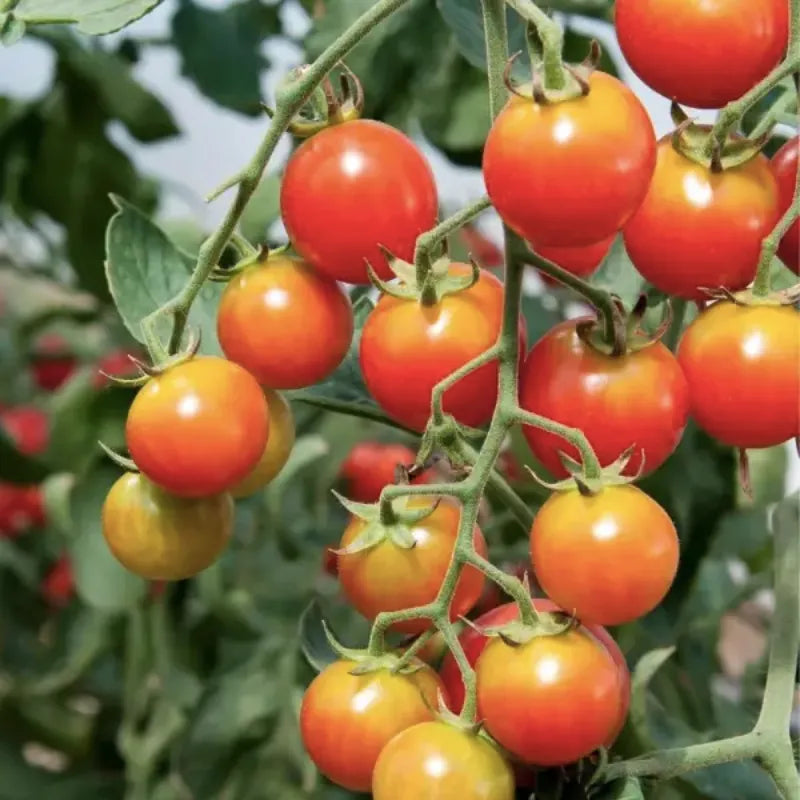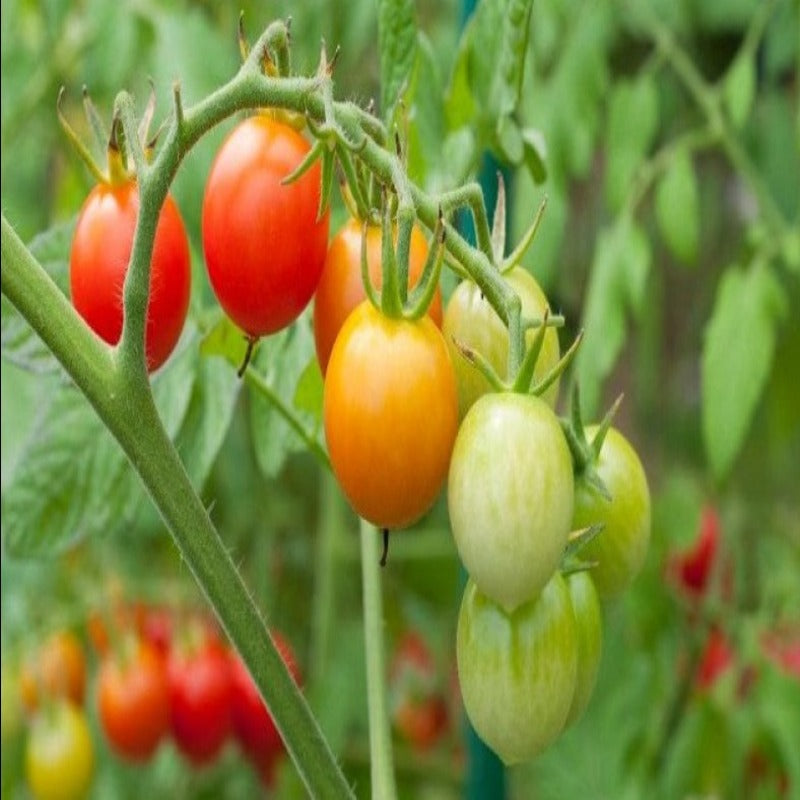- Species and varieties: Cherry tomatoes (Solanum lycopersicum var. cerasiforme) come in various colors including red, yellow, orange, and even purple. Popular varieties include 'Sun Gold', 'Sweet Million', 'Black Cherry', and 'Yellow Pear'.
- Hybrid or heirloom: Cherry tomatoes can be both hybrid and heirloom. Hybrid varieties like 'Sun Gold' are bred for specific traits such as disease resistance and high yield, while heirloom varieties like 'Black Cherry' are open-pollinated and have been passed down through generations for their unique flavors and characteristics.
- Pruning and training: Cherry tomatoes benefit from regular pruning to remove suckers (the shoots that grow between the main stem and branches) to promote better air circulation and prevent disease. They can be trained to grow on stakes, cages, or trellises to support the plant and keep the fruit off the ground.
- Fertilization needs: Cherry tomatoes are heavy feeders and require regular fertilization. Use a balanced fertilizer (such as 10-10-10) at planting time and side-dress with compost or a balanced fertilizer every 4-6 weeks during the growing season. Avoid excessive nitrogen, which can lead to lush foliage but fewer fruits.
- Hardiness zones: Cherry tomatoes are typically grown as annuals and are suitable for USDA hardiness zones 2-11. They thrive in warm climates and are sensitive to frost.
- Climate requirements: Cherry tomatoes require full sun (at least 6-8 hours of direct sunlight per day) and warm temperatures. They grow best in temperatures between 70-85°F (21-29°C). They need well-drained soil with a pH between 6.0 and 6.8.








